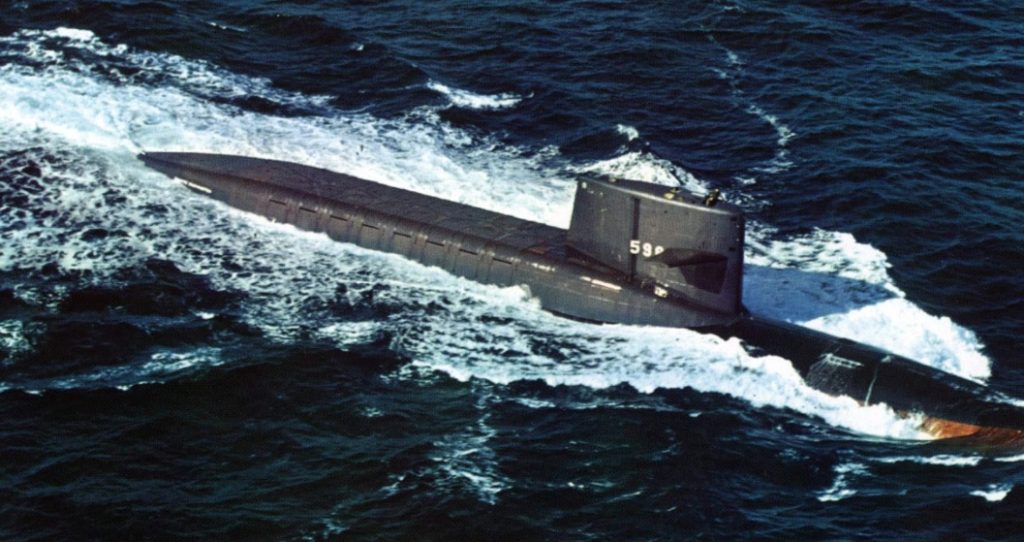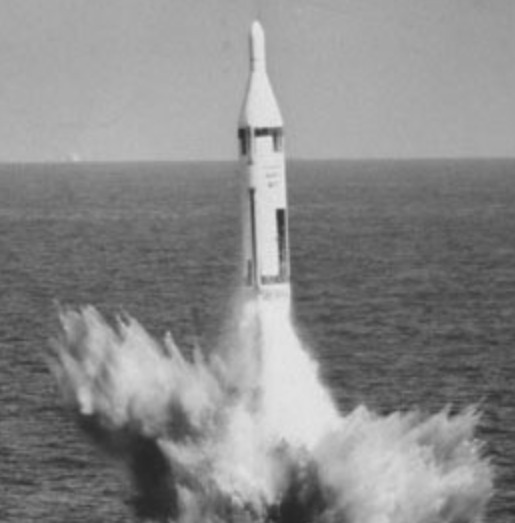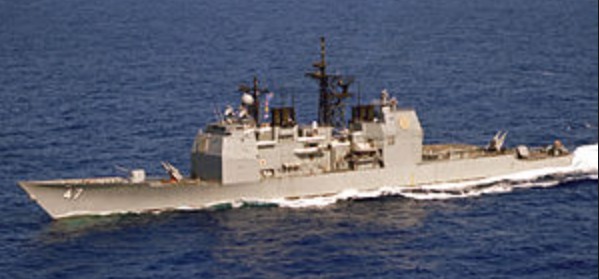
To fix DoD acquisition, one only has to leverage George Gilder‘s brilliant adoption of Claude Shannon‘s information theory as the economic growth engine. Shannon’s 1948 landmark information theory paper, “A Mathematical Theory of Communication,” defines information as surprise. For his mathematics and research he is credited as the father of the information age. He taught the world that information transmitted across a communication channel (a wire, a fiber, cell towers, or human networks) is information or surprise at the receiving end because it is unknown before it was sent. If we could predict new information communicated across a channel, it would have little or no value*
“Information theory treats human creations or communications as transmissions through a channel, whether a wire or the world, in the face of the power of noise, and gauges the outcomes by their news or surprise… Now it is ready to come out into the open and to transform economics as it has already transformed the world economy itself.”
Gilder, George. Knowledge and Power: The Information Theory of Capitalism and How it is Revolutionizing our World
An ideal Shannon communications channel is a low-noise predictable carrier, such as an undersea fiber-optic cable delivering a coded signal, that if interpreted correctly on the other end of the channel delivers new information as surprise. Gilder applies the idea of information surprise to economic growth, arguing that all useful economic growth is the result of human-inspired entrepreneurial surprise delivered across a government/business global low-noise channel of predictable laws, reasonable taxes, and supportive infrastructure.
Gilder illustrates this by citing successful entrepreneurs like Bill Gates, or Steve Jobs, whose successes helped accelerate the information age onto the world stage. The multiplier effect of Microsoft’s desktop operating system and Apple’s Macintosh desktop computer and later iPhone, all delivered entrepreneurial surprises that helped catalyzed the world from the industrial age into the information age. These surprises were not the result of government identified requirements or consumer identified demand, but rather a world with a stable low-noise government system enabling entrepreneurs like Bill and Steve to bring surprising products to the market. In macro-economic theory, this is known as supply-side economics, because the supply of surprising new goods and services are the primary driver of economic growth, which in-turn grows human knowledge, creates jobs & wealth, and enables synergistic opportunities, such as mobile phone applications, to grow exponentially.
Supply-side economics competes politically with demand-side economics which holds that the government controlled money supply (The Federal Reserve Central Bank of the United States) helps induce consumer demand, in turn multiplying economic activity and resulting job growth. Government spending during the great depression, and again following the crash of 2007, are held up as value proofs for demand-side economics.

Gilder’s 2013 book, “Knowledge and Power,” explores this dichotomy in depth and refutes demand-side economics as a high-noise information theory economics because it espouses government control of the money supply, high taxes, and restrictive regulations to modulate economic carrots and sticks. Gilder argues that such government control and over-regulation is effectively Shannon’s high-noise channel (high taxes, over-regulation, money manipulation), or economic noise interference that disincentivizes high-surprise entrepreneurs from bringing new inspired products and services to the marketplace. The reason, he argues, is that centralized, limited-knowledge, control never succeeds as well as human-inspired distributed knowledge and the resulting surprise of entrepreneurial invention. His demonstration proof of this is twentieth century centralized Marxist governments that pushed their people into poverty and left 100 million dead citizens in their wake, with little to no entrepreneurial surprise. Because human knowledge is always dispersed, Gilder argues that economic power must also be dispersed to effectively tap the power of entrepreneurial surprise:
“Enforced by genetics, sexual reproduction, perspective, and experience, the most manifest characteristic of human beings is their diversity. The freer an economy is, the more this human diversity of knowledge will be manifested. By contrast, political power originates in top-down processes—governments, monopolies, regulators, and elite institutions—all attempting to quell human diversity and impose order. Thus power always seeks centralization.
Gilder, George. Knowledge and Power: The Information Theory of Capitalism and How it is Revolutionizing our World
The history of DoD acquisition suggests that Gilder’s information economics theory can also be applied to the government/industry partnership which determines our Military’s materiel capabilities. Much of our Military’s greatness can be attributed to past successful surprises like nuclear powered submarines, F-117 stealth jet-fighters, and precision guided munitions, just to name a few. The same low-noise acquisition channel, and resulting entrepreneurial surprise are applicable and easily traced back through DoD’s acquisition history.

Following World War II, early post-war acquisition successes revolutionized our Nation’s military capability. For example, Admiral Hyman Rickover led the development and demonstration of a pressurized steam nuclear reactor capable of powering a submarine, and went on to lead the development of the world’s first nuclear submarine, the USS Nautilus. All of that took place between 1947 and 1954 when the USS Nautilus, powered by that nuclear reactor plant, was launched 2 1/2 years after ship contract award.

Or consider Admiral “Red” Raborn who led the development of the associated Polaris Submarine Launched Ballistic Missile (SLBM). That development began in 1956 and four years later the world’s first SLBM was demonstrated in 1960, fired from the world’s first ballistic missile submarine, USS George Washington. That submarine was put on contract in December of 1957 and launched in June of 1959, just 18 months later!

Lastly consider Admiral Wayne Meyer‘s entrepreneurial achievements. In 1970 he was assigned as the Program Manager of the newly formed AEGIS shipboard missile defense system. Early confidence building missile intercept testing enabled him to grow the program into the ships combat weapons system and then lead the development of a new class of AEGIS guided missile ships. Prior to AEGIS, weapon systems were adapted to the ships they were installed aboard. Wayne Meyer turned that around and engineered the ship to best accommodate the combat weapons system. The lead ship of the class, USS Ticonderoga, was put under contract in 1980 and launched in 1983. Wayne Meyer led the AEGIS program office from 1970 until 1983. During that time the program never missed a milestone schedule, overran a budget, nor failed to achieve performance requirements. I was honored to report to him directly for a portion of my Naval career, and still value his leadership lessons. Equal examples can be found for the Air Force and Army in those early post WWII years.
Unfortunately those 5-7 year development-to-production timelines have steadily crept upward until today we are experiencing 20+ year development-to-production timelines for programs such as the F-35 Joint Strike Fighter. The most common argument for the radical rise of acquisition timelines is the complexity of new weapon systems, the need for continuous competition, and the importance of husbanding taxpayer resources. But can one really argue that the F-35 is more complex than the first nuclear powered ballistic missile submarine developed at a time when nuclear power was still a science experiment and missiles had never been launched from an undersea submarine?
As a mid-level Pentagon bureaucrat during the 1990’s, I believe the past forty years have demonstrated DoD’s unintended transformation from low-noise successful acquisition processes to high-noise unsuccessful acquisition processes. That isn’t to say those early program pioneers didn’t have to navigate the government bureaucracy of their day, they did. But those program pioneers held themselves accountable and provided leadership to their offices and associated contractors in a way that inspired Navy seniors and Congress to entrust them with the funding and authority to successfully complete their programs on time. In the end, through a low-noise acquisition channel, they delivered entrepreneurial surprises that remain at the forefront of our National Security.
Contrast that with today’s easily observable ineffective Defense acquisition spending, massive acquisition cost and schedule growth, and less effective military materiel! Perhaps even more significant is that today’s programs must satisfy hundreds to thousands of oversight people chartered to second guess all major program decisions. In addition, an entirely new class of defense industry has emerged as government support contractors. These companies exist just to service the high-noise program documentation and decision processes specified in the Departments “Operation of the Defense Acquisition System Instruction” (DoD Instruction 5000.02), and significantly increase the cost of all programs.

An easy to measure test of this truth is the time-honored success of DARPA projects. Using general requirements for improved warfare capability, DARPA has consistently delivered revolutionary National Security systems to include precision guided weapons, stealth platforms, energy weapons, artificial intelligence, the internet, etc. While most will argue that DARPA is only providing the early Science & Technology proof-of-concept for these systems, many projects have developed into full battlefield proven capabilities before adoption into a Military service for fielding and sustainment. The reason for these successes is the low-noise DARPA funding/contracting channel that enables rapid entrepreneurial surprise of new military capabilities!
Part 2 of this post will provide a detailed discussion of how today’s current high-noise bureaucratic acquisition system can be transformed into a lower-noise channel to enable our Country’s Military to retain the dominance required to address today’s near-peer competition for the future of National Security!
*Shannon’s invention of the term “information entropy” has been excluded from this post. The mathematics of information theory isn’t necessary to understand Gilder’s application of “information theory surprise” to the economy and DoD acquisition.

Marv,
Great note as always expected from your strategic observation post!
Crucial points, solid examples from our Naval forefathers of the cross bearing required to achieve a world class technical warfighting machines of their time across history.
Also, the mention of the “new class of defense industry” is spot on – those who provide support to the government so that the government can follow its own bureaucratic processes. And so should we be reminded to go back and listen to President Eisenhower’s farewell speech of 1961 and his identification of the the then new ‘Military-Industrial Complex’… The DoD Government Civilians have a challenge to live up to, “In the councils of government, we must guard against the acquisition of unwarranted influence, whether sought or unsought, by the military-industrial complex. The potential for the disastrous rise of misplaced power exists and will persist. We must never let the weight of this combination endanger our liberties or democratic processes. We should take nothing for granted. Only an alert and knowledgeable citizenry can compel the proper meshing of the huge industrial and military machinery of defense with our peaceful methods and goals, so that security and liberty may prosper together.”
Thanks Trey, good comments and a great quote we should all be reviewing each year.
This is a breath of fresh air – grounded in historical examples. Even to those who already believed that acquisition “noise” is the issue, this description of the significance of its impact is staggering. While not the intent, the oversight “business” is breaking the entrepreneurial spirit and stymying program efficacy and limiting effectiveness.
I eagerly await the next installment.
Thanks Amy, My fear is that stymying isn’t a strong enough word to capture where we are now!
Marv,
Great post. Another characteristic of some of the big example successes was the application of a critical mass of resources dedicated to delivering to a realistic tight schedule. Leaders singularly focussed and not distracted by endless presentations to oversight groups with no accountability for results.
Right on, thanks for the comment Marc
Right on target Marv. I recall being in the U-2 program office at Wright Patterson in the 1990 timeframe when an award was made for the EMD phase on the the Advanced Technology Fighter (which I believe was the F-22). They projected an IOC date of about 2002. I recall wondering at the time, what are these guys going to be doing over the next decade on this program – why does it take 12 years to move through EMD to IOC? I recall one of the Deputy program office directors lamenting that “the process has become the product.”
Thanks Ralph, great comments… good phrase, “the process has become the product” unfortunately the process doesn’t fly aircraft…
Marv: Your strikes gold with all of us who managed S&T in the 90s.Thanks for sharing your post.
Fred
Thanks Fred, And we could get back to a continuum from S&T to production if we kept S&T PMs in place as long as the program was showing value… I want to spend more time on that discussion in part II
Marv, your excellent discussion and treatment of the DoD acquisition process referenced your earlier career days when you worked under Admiral Meyer, when you participated, contributed, and witnessed the successful development and deployment of the Aegis system into the Fleet of cruisers and destroyers that are now playing a world wide role of protecting nations and continents from ballistic missile attacks. The philosophy that generated this success was based on the build a little, test a little, learn a lot system engineering philosophy, led by very accountable Navy leadership. The low noise communication philosophy was at work and was the foundation that ensured success by the collaboration of key technical leaders and managers who were well versed in the goal of closing the loop in order to hit the target. There was critical technical over-site, however, the goal of hitting the target was not overwhelmed with redundancy in terms of multiple layers of decision making that raised the nose level to the point that the signal could not exceed threshold which is what is happening today in the acquisition process. Marv, keep up the great discussion on this topic.
Thanks Mike… your words are spot on…
Marv, thank you for speaking to clearly about today as compared to the rapid, revolutionary accomplishments of the past.
Susan
Thanks Susan, it is time to take advantage of the OTA power that Congress has authorized and move good S&T straight into production…
Marv,
Great read. Thinking about Hemant Taneja “Unscaling” and how platforms enable new entrants into previously established domains.
Vr
Kurt
Kurt, thanks for the new read, I hadn’t seen this book but now have it. Cell phone are the great example of a new platform that has changed our planet. It required the combination of a lot of tech but it required entrepreneurs like Steve Jobs to bring it all together and create the future that over 2 billion people on our planet now enjoy.
Great content, Marv! the pain is broadly experienced all around. As a manufacturer rep, we’ve seen Navy choose something other than their first or second choice because of just these kinds of issues. Navy (forces itself to) buy a third rate solution at a higher TCO, because of acquisition hurdles, latency and paperwork. Some vendors have even adapted to focus on acquisition instead of the right solution. How refreshing it would be to see (even a competitor) win business and help Navy modernize.
Thanks Jon, you are validating my comments from the trenches… much appreciated…
Great read. Wish we had more who fall in love with problems and not process.
Marv, Even better than I had imagined when you told me you were writing it. I also like the phrase “the process has become the product”. I see that in spades. I think I saw that before when I first came to work for the Navy in the early 70s. It was easy to get money to study things, develop processes, standards and more regulations, but hard to start building anything new. I remember my seniors saying we must get things ready to starting building new things. We did come up with a lot of new concepts and ideas. Then came the 80’s when Reagan gave us a goal of 600 ships. I was amazed we got to start building on some of these ideas. The 80’s produced lot including AEGIS. It seemed that a lot of the noise in the system also decreased with establishment of real product goals. Today, however, you are right. Not only are the goals much fuzzier the bureaucratic noise is unacceptable. I also noted that one of the comments mentioned the SE philosophy of build and test a little and learn a lot. This does imply some oversight and process structure. This perhaps is a lead in to Part 2. Not sure what you had in mind here but a look a what DoD may consider as a minimal ecosystem might be a part of it. Perhaps we can contribute to or influence where DoD is going with some of their new initiatives in Modular Open System Architecture (MOSA), Mission Engineering, Digital Engineering and Systems Engineering and Architecture in general. Here again DoD has the potential to add a lot more noise to the system or decrease it thru a mindset of a minimal ecosystems and frameworks rather than a lot more rigid regulations and standards that will be obsolete quickly . Great start Marv, would love to help if I can. PS: Also would add Eisenhower’s second warning about control of the scientific community as recommended regular reading.
Thanks Tom, great comments for a guy who has seen it all unfold…